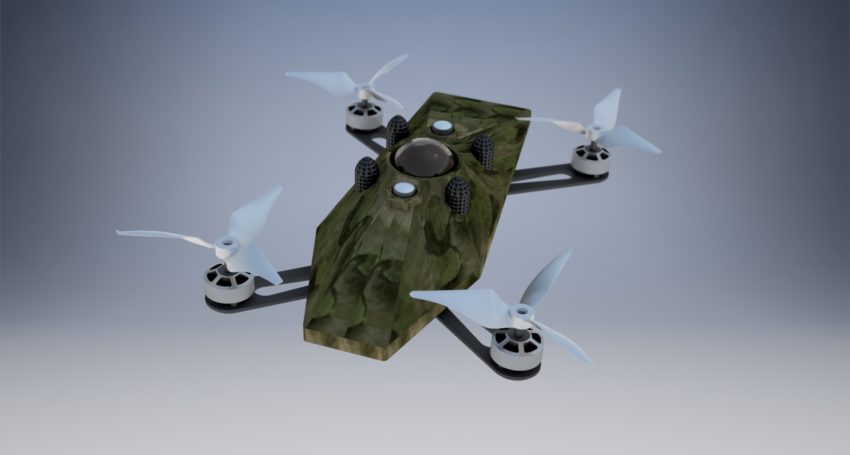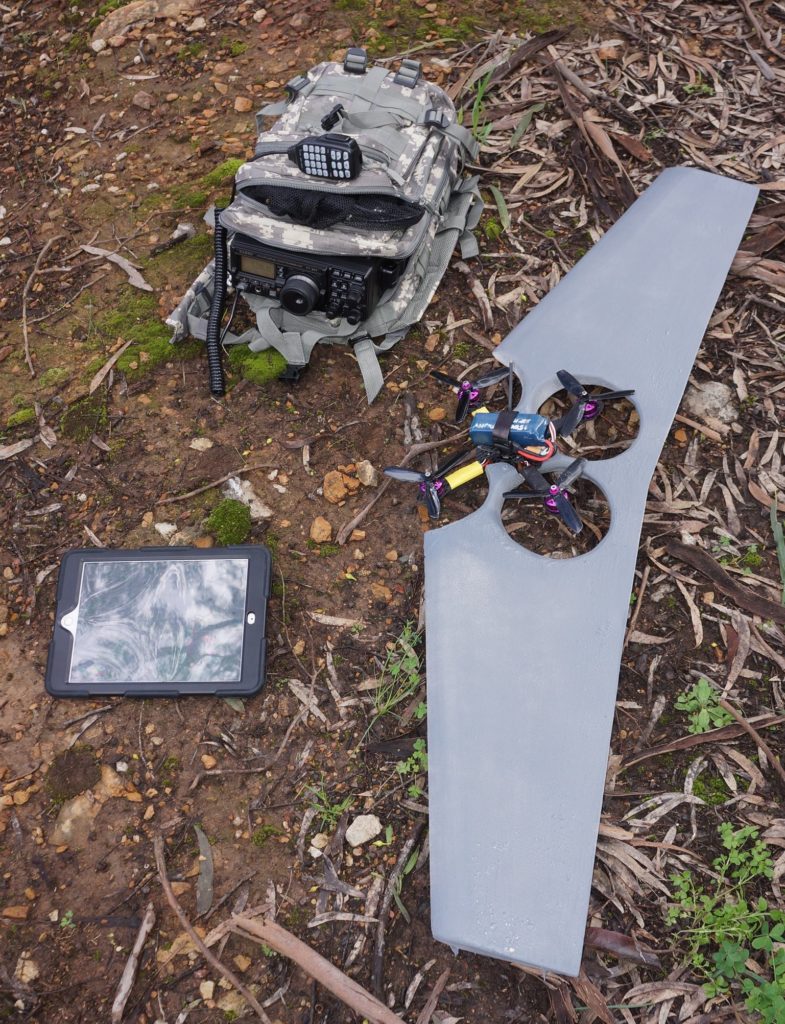Counter UAVs to drive enemy drones out of the sky
Defence
Defence drones to seek out and bring down hostile military UAVs are being developed in Australia.

Sign up to receive notifications about new stories in this category.
Thank you for subscribing to story notifications.

Military drones have changed the landscape of the modern battlefield in recent years but according to My Sky Technologies Director Steve Auch-Schwelk the technology to counter them has not kept pace.
Reacting to this gap in the market the startup is developing two models in Adelaide, South Australia. The first is a compact counter UAV drone with metal rotors that can be stored in a soldier’s pack and launched when an enemy drone is believed to be in the area.
Using a range of sensors including RF, infrared, video and GPS, the 600-gram drone can quickly locate and reach an enemy UAV and then attack it with saw-like rotors to bring it down.
“We’ve created a man-portable, field-deployable fire-and-forget counter UAV solution,” Auch-Schwelk said.
“You can have a few of these in your pack and you pull them out, the blades snap open and it autonomously searches, classifies, tracks, engages and destroys.”
The counter-attack drone reaches speeds of up to 250kmh, can fly to an altitude of 5000m and has a range of about 8km.
“What people don’t realise is that these little walnut-sized motors on here are about as powerful as your average circular saw and we’ve got four of these so when you add metal props there are not many commercial drones it won’t cut through.”
The second model, which uses a similar suite of sensors and is just as portable, is designed to provide fast battlefield assessments.
“If you come under fire and you don’t know where it is coming from you can throw one of these things up into the air and it will go up about 200m to get a tactical picture of radio chatter, heat signatures and acoustic firing lines,” Auch-Schwelk said.
“If you are in a forward position, the same model can scan out a particular area and you can also strap wings to it to give it a longer range.”

My Sky Technologies pitched its attack drone to the Australian Defence Force at Army Innovation Day 2017 in Canberra last week. It also recently responded to a Request for Proposals from the Australian Government’s Defence Innovation Hub with its surveillance drone. It hopes to hear the outcome of both projects in the coming weeks.
The company was spun out of parent company Simbiant in June and took part in Techstars’ defence and security-focused accelerator program in Adelaide from July to October. Simbiant, also based in the South Australian capital Adelaide, includes domain experts in hardware and software engineering, mathematics, physics, electronic warfare (EW) and complex military systems and platforms.
“The idea was conceived at Simbiant and it still has a lot of reach back but it is a different company because rather than being a research and development company it’s a product development company,” Auch-Schwelk said.
“The drone industry has really boomed – they have revolutionised the battlefield – but counter UAV hasn’t kept pace so there is a big hole in the market.
“Also, the smaller sensor manufacturers haven’t kept pace. A lot of the big military manufacturers like building big expensive things they can sell to the military. Their big sensor suites are worth tens or hundreds of thousands of dollars whereas we’ve seen a niche for cheap and small sensor suites at a fraction of the price suitable for more or less a disposable munition.”
Auch-Schwelk said combining off-the-shelf sensing technologies and shrinking them down onto their own boards would allow the drones to be compact, lightweight and affordable.
He said creating a drone weapon to attack another drone was a novel approach.
“There are many different governments trying to crack this nut but I don’t think anyone is really taking the path we are going down and that’s why it’s quite exciting.
“The big picture is that in three or four years there are going to be drones flying all over the place delivering packages and pizzas and all sorts of things and they are going to need situational awareness in the same way as driverless cars need to know everything that’s happening on the road.
“We want to get the cost of this sensor suite down and into a turnkey system that we can start selling to the hundreds of millions of drones being manufactured around the world to give that situational awareness of the air space around them.”
Jump to next article



